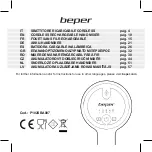
84
Chapter 8—Stereo Output
03D—Owner’s Manual
About the Stereo Output
The stereo output signal can be output to analog XLR-type connectors, analog REC
OUT connectors, YGDAI digital outputs, or AES/EBU and COAXIAL digital outputs.
The stereo output features four-band parametric EQ and a dynamics processor.
Analog Stereo Outputs
The stereo output signal is converted to analog using
20-bit 8-times oversampling D/A converters, and then
output via balanced XLR-3-32-type connectors with a
+4 dB nominal output level.
DIGITAL STEREO OUT
The stereo output signal can also be output digitally via the DIGITAL STEREO OUT
connectors. Two connectors are available: one for AES/EBU format and one for COAX-
IAL format. See Digital Stereo Out on page 219 for more information.
Stereo Output & the YGDAI Interface
In addition to the analog stereo outputs and DIGITAL STEREO OUTs, stereo signals
can be output via the YGDAI digital outputs. See YGDAI Cards on page 223 for more
information.
Rec Out & the Stereo Output
The stereo output signal can be sent to the REC OUT
connectors. These are phono jacks with a –10 dBV nom-
inal output level. The REC OUT connectors can also be
used to output signals from bus outs 1 and 2. The REC
OUT SOURCE SELECT switch is used to select the signal
source.
Solo & the Stereo Output
The Solo in Place and Mixdown Solo modes work in conjunction with the stereo out-
put. See Setting Up Solo on page 75 for more information.
Monitoring the Stereo Output
See Solo, Monitors & Meters on page 71 for more information.
Metering the Stereo Output
Stereo output signal levels are metered using the 12-segment LED meters. See Metering
on page 79 for more information.
Routing Signals to the Stereo Output
Input channel, stereo input channel, and effects return signals can be routed to the ste-
reo output. See Stereo Pan, Balance & Routing on page 59 for more information.
3
1
2
3
1
2
ST OUT
R
L
+4dB(BAL)
REC OUT
R
L
SOURCE
SELECT
ST OUT
BUS OUT
1-L•2-R
–10dBV
(UNBAL)
















































